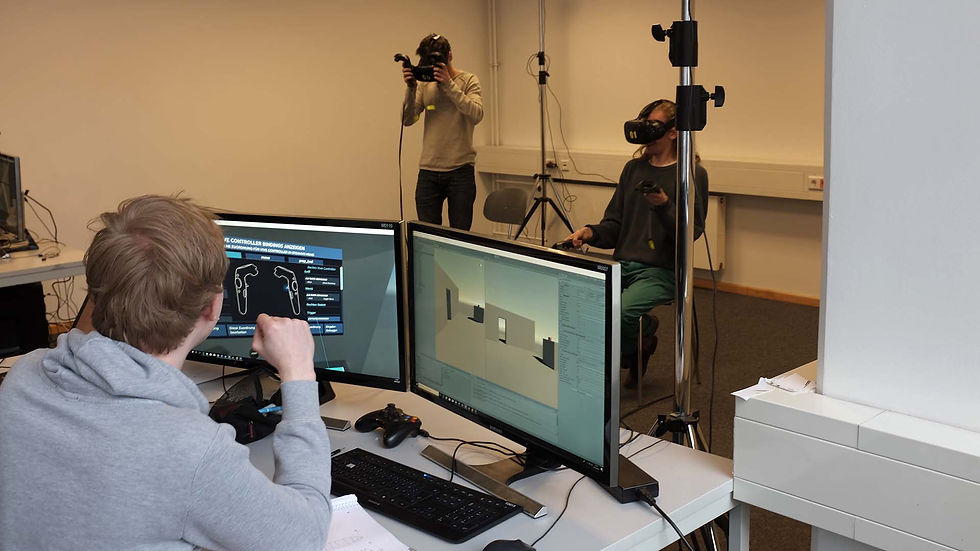
BATTLE PLATFORM
Battle Platform is an asymmetrical co-op shooter in which two players band together to fight through a military testing facility full of dangerous hazards. While the navigator (PC) uses their tactical top-down view to pilot the platform through a maze-like environment, the gunner (VR) stands right in the center of the action and uses powerful weapons to attack threats in all directions.
MY TASKS:
Game Design
Level Design
Development
Project Management
genre: Asymmetrical Co-Op Shooter (VR & PC)
team size: 4 — time frame: 3 weeks (4th semester, HTW Berlin)
RESPONSIBILITIES
Game Design
-
Designing asynchronous gameplay in which two players have different perspectives and must communicate to share their exclusive information between each other
-
Finding meaningful hand motion mechanics for the VR-player through rapid prototyping
-
Creating interesting gameplay challenges, enemies and hazards that promote the communication between the players and incentivize the use of all combat mechanics
Level Design
-
Developing level modules that emphasize the interdependence of the players
-
Creating exciting combat encounters that engage and challenge both players
-
Building puzzles and mazes that can only be solved by sharing information
-
Constructing the final level structure with good pacing, variance, compelling short-term goals and a thrilling final combat encounter
Development
-
Sharing and coordinating programming and prototyping tasks with a second developer
-
Developing VR-controller mechanics such as the rail-mounted machine gun
-
Putting together the work of the entire team in the Unity engine to produce the final playable prototype
Project Management
-
Managing the team project by organizing and structuring work sessions
-
Taking responsibility for upholding the project’s vision and taking a leading role in making high-level decisions
-
Creating production plans, allocating the team’s resources and overviewing progress, dependencies and coherence

Testing out VR

Setting up and testing VR and PC asymmetrical gameplay in Unity (sharing VR space with other team)

Playtesting at exhibition

Testing out VR
Development Process Impressions
LEARNINGS
It was very exciting to work with VR technology and learn about its strengths and weaknesses. We tried to build on its immense potential for immersion, develop interesting hand-movement mechanics and mitigate the usual issues of space limitation and motion sickness.
The team successfully embraced the philosophy of failing forward, developing many consecutive prototypes to test out our ideas within an unfamiliar design space. With a routine of rigorous analysis and no fear of cutting out ideas, we managed to create a great product in just three weeks. This experience convinced me that a highly iterative design workflow is the best way to create games effectively.
While we were sure about the general concept of different perspectives and interdependence of the two players, we struggled to find a fitting theme and meaningful mechanics to create gameplay that’s actually fun. This is why I made the informed decision to change the narrative to a rather generic battle theme. Now, the players could focus on the unique and unusual gameplay dynamic, while relying on proven mechanics and narratives otherwise. This made me fully realize how innovation is best received when framed in the context of what’s familiar.

Ideation on the jam's theme

VR setup and early team reflection

Level design and sequence plan documentation

Ideation on the jam's theme
Dev Diary Impressions